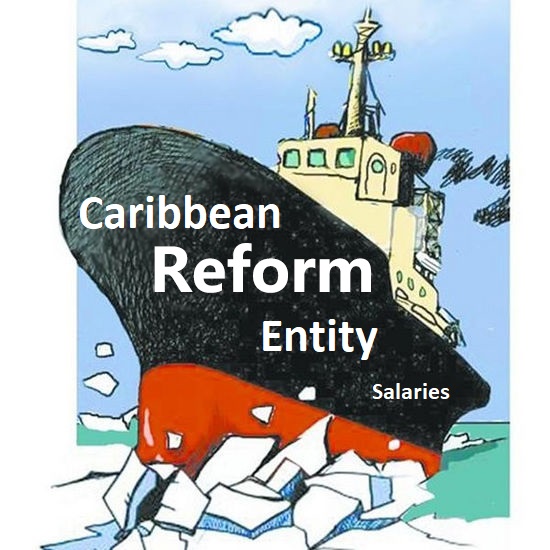Reform Entity wants to bring down public wage bill to 10 percent of GDP

PHILIPSBURG – Reading through the document that outlines the 59 measures the Caribbean Reform Entity (CRE) has in mind to put St. Maarten, Curacao and Aruba in better shape feels a lot like looking at an X-Ray that reveals in very embarrassing detail all the things successive governments should have done since 10-10-10 – but never did. This article highlights most of the proposed measures in the field of the costs and effectiveness of the public sector; this section contains 15 of the 59 CRE-measures.
The CRE-objective is to increase the effectiveness of the public sector by decreasing the wage bill to the Caribbean average of 10 percent of Gross Domestic Product. What does this mean in concrete terms?
Based on data from statista.com St. Maarten’s GDP in 2016 – before Hurricane Irma – was roughly 1.9 billion guilders (around $1 billion). The International Monetary Fund projects a drop in GDP as a result of the COVID-19 crisis of 25 percent; that would put GDP for 2020 in this scenario at around 1.44 billion guilders or $804 million.
A wage bill ceiling of 10 percent of GDP would therefore put maximum expenditures in this field at just under 144 million guilders or $80.4 million. The wage bill listed in the 2020 budget amounts to 186.2 million guilders ($104 million), leaving a gap between real expenditures and targeted cuts of 42.2 million guilders ($23.6 million). It is unclear whether the CRE wants to include salaries paid at government-owned entities in the total; in that case, the gap between the current reality and the desired future would be significantly larger.
All this is no reason to hit the panic button yet: the CRE-document states explicitly that, before any action is taken, it will examine existing research and if need be do additional research.
Based on integral audits of all (semi) government-owned companies and entities into the legitimacy of public stock ownership, proposals will be developed and implemented. Questions relevant to these audits examine whether these entities serve public objectives and whether these objectives are realized.
Another measure focuses on the quality, effectiveness and executive power of the government organization. The CRE will also look into the strength of the ministerial staff and take the World Bank publication Public Expenditures Review (expected to be released in the third quarter) into consideration.
Yet another project will examine secondary and tertiary labor conditions like overtime, leave of absence regulations, special remuneration and allowances, travel and travel allowances for one purpose only: to develop and implement proposals for austerity.
The CRE will also go after ghost civil servants, though the document that outlines the plan to tackle this phenomenon is careful enough not to use this term. Instead, it reads: “In the context of optimum personnel deployment, the formation, occupation, and actual presence of employees of government entities will be examined. If employees unjustly receive a salary, measures will be taken; depending on the situation this could be stopping the salary-payment or dismissal.
Tariffs for hiring externals will be capped at 130 percent of the hourly wage of the Prime Minister. Assuming that the PM’s salary is formally based on a 40-hour workweek, and taking the 25 percent cut into account, the maximum hourly rate for externals would be around 120 guilders or $66.90.
What else do the authors of the CRE-document have in mind? Here are a few more examples: a performance-management system for the civil service, limiting political influence on human resources, reducing the cost of housing (we assume: of government departments) by 20 percent in the next five years, extending SVB own-risk days to a maximum of five, decreasing current cost of living adjustments by 10 percent, eliminate indexing and maximize it at 100 percent of a salary.
###
Related articles:
Caribbean Reform Entity has 59 measures in mind
Knops issues tight deadlines for liquidity support conditions
Reform Entity wants to bring down Public Wage Bill to 10 percent of GDP
Reform Entity: Retirement age to 67 by 2025
Reform Entity tackles Chaos at Crime Fund
Reform Entity: Healthcare and Education Systems need improvement
Final review: Will the Caribbean Reform Entity become a reality?
Opinion by Hilbert Haar: “Rejected? Yes; no; well, maybe”


























